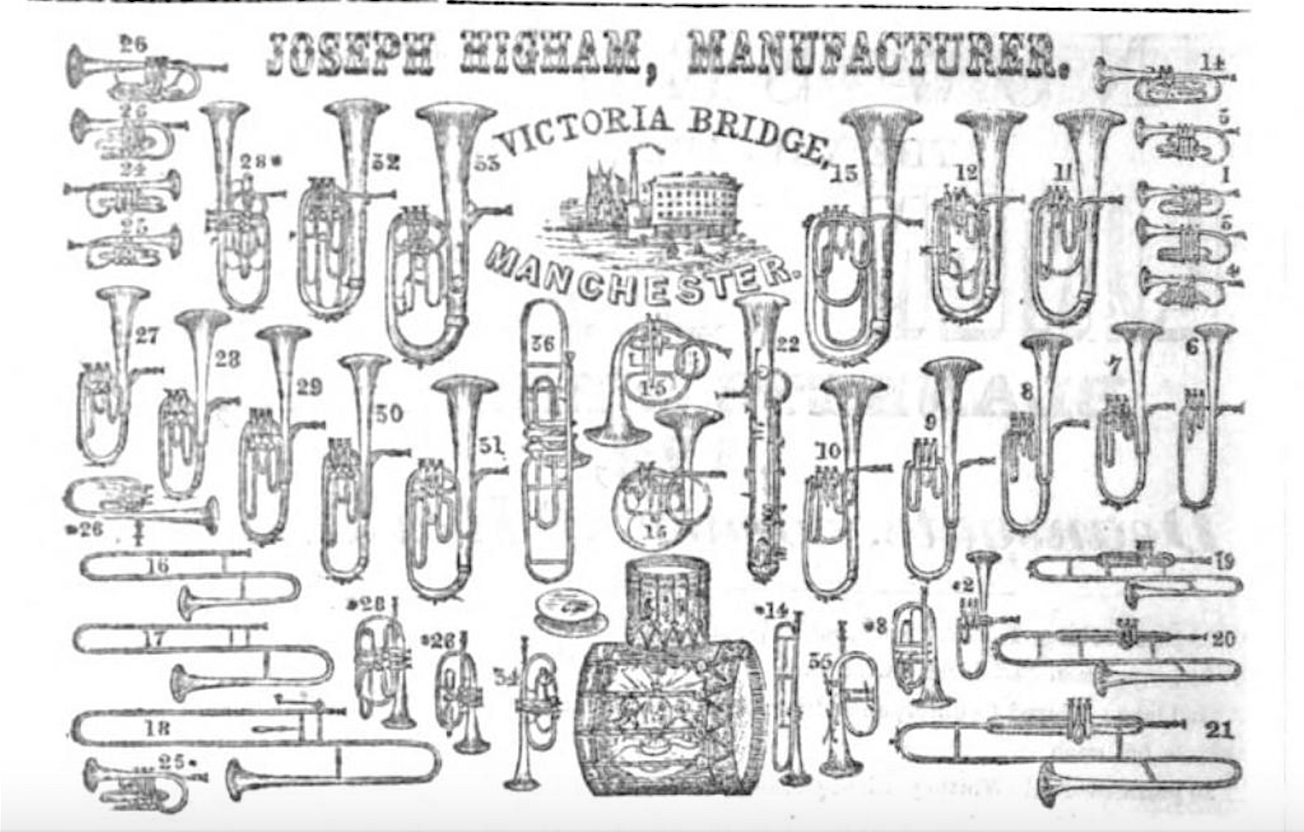Below are two more primary sources from the mid-19th century that show the alto trombone in the E-flat orbit. You can find them in broader historical context in the Alto Trombone History Timeline. I also added the Caussinus method to the tally of treatises, dictionaries, and methods, where there are now approximately 60 primary sources that specify alto trombone pitch. Collectively they point to a smaller instrument than the tenor, pitched in the E-flat orbit.
1846—Paris, France: Victor Caussinus, an ophicleide specialist, writes the method book, Solfège-méthode progressif: pour l’enseignement du cornet à pistons, de la trompette chromatique, saxhorns ou bugle à pistons, du sax-tromba our trombone-alto à pistons. Caussinus places the alto valve trombone in E-flat or F (see below image; public domain) (Caussinus 13).
1857—Manchester, England: An advertisement for manufacturer Joseph Higham includes the following entry: “16 Trombone. Alto. F or E-flat. German Silver slides.” The number corresponds to a graphic of a trombone that is the shortest in a grouping of three slide trombones (see below image; public domain) (The Strangers Guide to Manchester, with a Map of the Environs, and Illustrations of Public Buildings 63).